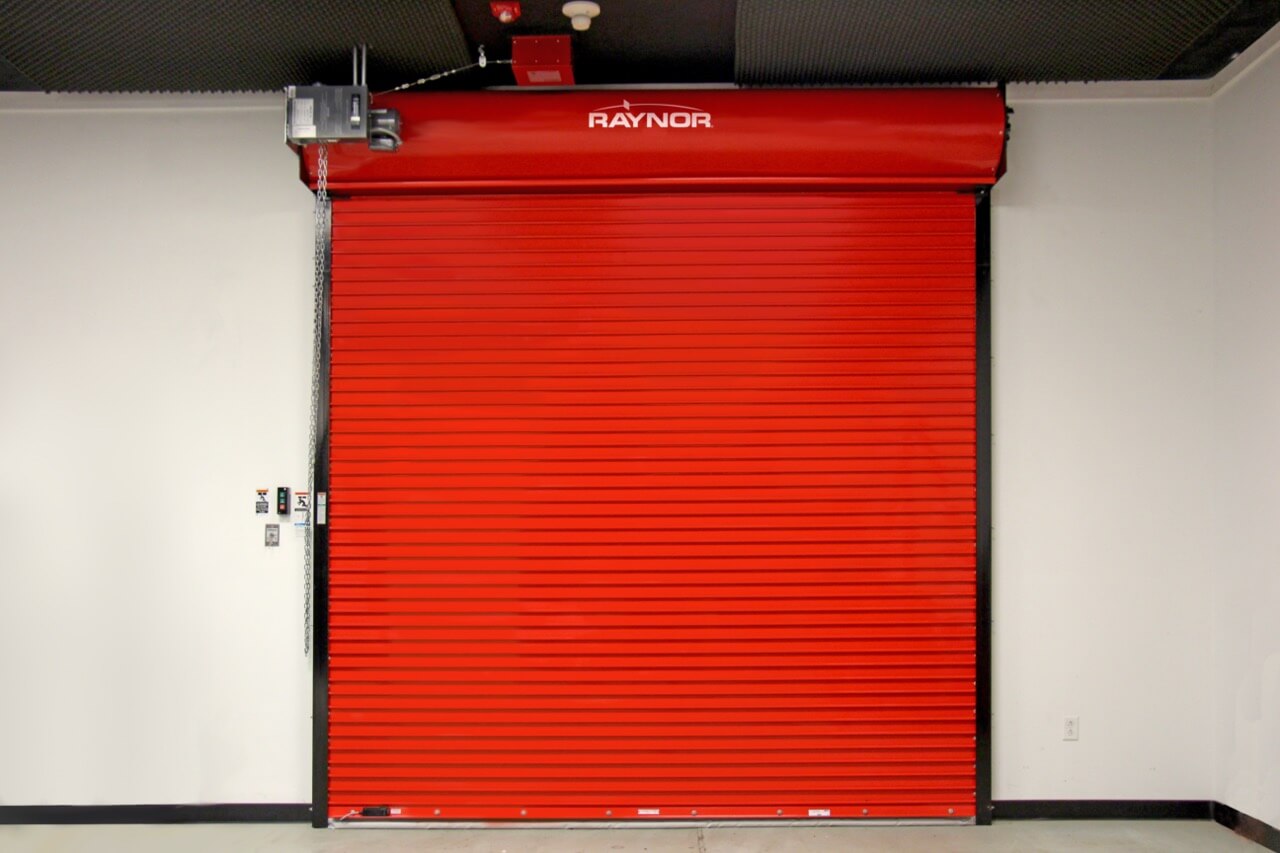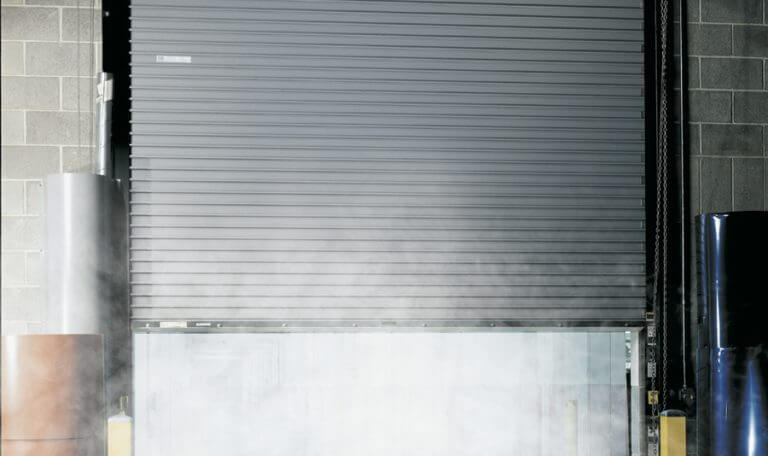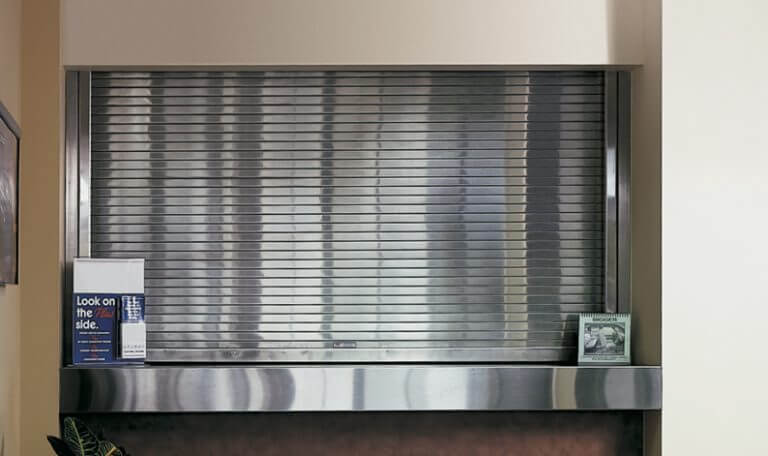Fire-Rated Commercial Doors: What Every Commercial Building Needs to Know
Navigating the world of commercial building safety can be complex, especially when it comes to ensuring adequate fire protection. This article serves as a comprehensive guide to understanding fire-rated commercial doors, their importance of fire-rated doors in commercial establishments, and why fire safety standards are crucial for every commercial property. We aim to provide clear, straightforward information to help you make informed decisions about the safety of your commercial building and its occupants.
Understanding Fire-Rated Commercial Doors
What are Fire-Rated Commercial Doors?
Fire-rated commercial doors are specialized doors designed to withstand fire for a specific period. These fire-rated doors are an essential component of a commercial building’s passive fire protection system, acting as fire breaks to slow the spread of fire and smoke. The primary goal of fire-rated commercial doors is to give building occupants valuable time to evacuate safely during a fire exposure incident. Fire-rated doors must adhere to strict fire safety standards.
Types of Fire-Rated Door Options for Commercial Buildings
Several door types of fire-rated doors exist, each designed for specific applications within a commercial building:
- Swinging fire doors – The most common commercial door type used in commercial settings
- Sliding fire doors – Often used in areas where space is limited
- Pair doors – Double door configurations for wider openings
- Steel doors – Highly durable fire-rated door options
- Fire-rated glass doors – Combining visibility with fire protection
Materials used in fire-rated commercial doors include wood, steel, and composite materials, all chosen for their ability to withstand fire. The door types needed often depend on building codes and regulations specific to commercial properties.
Why Fire-Rated Doors are Required in Commercial Buildings
Fire-rated doors are required in commercial buildings to comply with building codes and regulations, ensuring the safety of building occupants. These doors play a critical role in compartmentalizing a commercial building, preventing fire spread from one area to another. The installation of fire-rated doors is not just a matter of compliance; it’s about safeguarding lives and minimizing property damage. Doors are required to prevent fire spread in all commercial establishments.
Importance of Fire-Rated Commercial Doors in Building Safety
The importance of fire-rated commercial doors cannot be overstated – fire-rated doors save lives by providing a critical barrier against fire and smoke, allowing occupants time to evacuate. Key benefits include:
- Life Safety Protection – Fire-rated doors serve as the first line of defense
- Property Protection – Containing fire to minimize commercial building damage
- Code Compliance – Meeting fire safety standards requirements
- Insurance Benefits – Proper fire protection can reduce premiums
Moreover, the maintenance of fire-rated doors ensures they function as intended, offering reliable fire protection. Fire-rated doors undergo rigorous testing to ensure fire resistance, underlining their importance of fire-rated doors in commercial applications.
Fire Safety Standards and Building Codes
Overview of Fire Safety Standards for Commercial Door Applications
Adherence to fire safety standards is paramount in the design and operation of any commercial building. These safety standards, developed by organizations like the National Fire Protection Association (NFPA), outline the minimum safety requirements for fire protection and life safety:
- NFPA 80 – Standard for Fire Doors and Other Opening Protectives
- UL 10C or NFPA 252 – Standard test methods for fire door assemblies
- International Building Code (IBC) – Comprehensive building safety requirements
- Local fire safety standards – Municipal and state-specific regulations
The fire safety standards ensure that commercial buildings are equipped to minimize the risk of fire and protect the occupants. Compliance with these safety standards is not only a legal requirement, but also a moral obligation to ensure the safety and well-being of everyone who enters the commercial building.
Building Codes and Regulations for Fire-Rated Doors in Commercial Buildings
Building codes and regulations dictate the specific safety requirements for fire-rated commercial doors in commercial buildings. These building codes, often based on the International Building Code (IBC) and other local ordinances, specify the fire resistance rating required for doors in different areas of a commercial building:
- Occupancy Classification – Different commercial uses have varying door requirements
- Fire Rating Requirements – 20-minute, 60-90 minute temperature rise doors, and higher ratings
- Narrow door specifications – Special requirements for limited-width openings
- Hardware specifications – Fire-rated hardware that doors must incorporate
Factors such as the commercial building’s occupancy type, size, and location influence these building codes and regulations requirements. The building codes also cover aspects like door construction, hardware, and installation methods. Fire-rated doors must undergo rigorous testing and certification to ensure they meet these safety standards.
Compliance with Fire Safety Standards
Compliance with fire safety standards includes selecting doors that meet the required fire resistance rating, proper installation by qualified professionals, and regular inspections and maintenance. Essential compliance elements include:
- Proper door selection – Ensuring doors meet or exceed required ratings
- Professional installation – Fire-rated doors must be installed by qualified technicians
- Regular inspections – Doors in commercial buildings require ongoing assessment
- Documentation – Maintaining records of fire safety measures compliance
Therefore, all commercial properties should meet all of the fire safety standards to ensure optimal fire protection.
Fire Prevention and Safety Measures
Role of Fire-Rated Doors in Fire Prevention Systems
Fire-rated doors serve as essential fire breaks that effectively compartmentalize a commercial building. These specialized doors are designed to withstand fire, preventing fire spread from one area to another, thus enhancing the safety of building occupants. Fire-rated commercial doors provide crucial time for evacuation during a fire exposure incident:
- Compartmentalization – Fire-rated doors play a critical role in containing fire
- Evacuation Time – Doors provide precious minutes for safe egress
- Structural Protection – Fire protective measures help maintain building integrity
- Smoke Control – Proper sealing prevents smoke infiltration
The installation of fire-rated doors plays a vital role in any comprehensive fire prevention strategy for commercial establishments.
Fire and Smoke Control Considerations
Fire-rated doors play a crucial role in containing fire and smoke, preventing their spread throughout the commercial building. Smoke inhalation is a leading cause of injury and death in fires. Key fire and smoke control features include:
- Automatic closing mechanisms – Doors automatically close when fire is detected
- Smoke seals – Preventing smoke infiltration through door gaps
- Fire barrier walls integration – Working with building fire protection systems
- Ventilation coordination – Supporting overall building fire safety measures
Fire-rated doors, when properly sealed, help maintain safer conditions for building occupants during a fire incident. The purpose of fire-rated doors extends beyond just fire resistance to comprehensive life safety and fire protection.
Best Practices for Maintaining Fire Safety
Best practices for maintaining fire safety regarding fire-rated doors include regular inspections and maintenance of fire-rated doors to ensure they function properly. These fire safety measures should include:
- Monthly visual inspections – Checking door condition and operation
- Annual professional inspections – Comprehensive assessment by qualified personnel
- Immediate repairs – Addressing any door damage or malfunction promptly
- Hardware maintenance – Ensuring all fire-rated door components function properly
Maintenance of fire-rated doors should address any issues promptly to ensure the door’s fire protection capabilities remain intact. Regularly scheduled inspections should also ensure compliance with the safety requirements for doors in commercial properties.
Selecting the Right Fire-Rated Door for Your Commercial Building
Factors to Consider When Choosing Fire-Rated Commercial Doors
When selecting the appropriate fire-rated door for commercial applications, several factors must be considered. The requirements of fire-rated doors vary based on:
- Fire rating needs – Determining appropriate resistance time requirements
- Commercial building type – Different occupancies have specific door needs
- Location within building – Fire barrier walls and exit requirements
- Traffic volume – High-use areas need more durable door construction
- Aesthetic requirements – Balancing safety with design needs
The right fire-rated door selection ensures optimal fire protection while meeting all commercial building requirements. Fire-rated doors come in various configurations to suit different commercial applications.
Assessing Fire Ratings and Certifications
Ensure that the selected door has the appropriate fire resistance rating and certifications from recognized testing laboratories. Fire ratings, typically expressed in terms of time (e.g., 20 minutes, 60-90 minute temperature rise doors), indicate how long the door can withstand fire exposure while maintaining its integrity:
- 20-minute ratings – Corridor and room doors in many commercial applications
- 45-minute ratings – Doors in 1-hour fire barrier walls
- 60-90 minute ratings – High-hazard commercial building applications
- 3-hour ratings – Maximum fire resistance for commercial door applications
Fire-rated doors undergo rigorous testing to obtain these ratings, ensuring they are designed to resist fire exposure effectively. Look for certifications from recognized testing laboratories to verify performance claims. These certifications provide assurance that doors meet required safety standards for commercial use.
Professional Installation and Placement Considerations
Consulting professionals for proper installation is essential to ensure the effectiveness of fire-rated doors. The installation of fire-rated doors must be performed by qualified technicians who understand the specific requirements for fire-rated assemblies:
- Proper framing – Ensuring fire-rated door frames meet specifications
- Correct hardware – Installing approved fire-rated door hardware
- Sealing requirements – Proper gasketing and seal installation
- Placement optimization – Placing fire-rated doors at strategic locations
Fire-rated doors must be installed according to manufacturer specifications and building codes. Improper installation can compromise the fire resistance of the door and negate its intended protective function. A professional can ensure the installation of fire-rated doors meets all building codes and regulations.
Advanced Fire-Rated Door Technologies and Applications
Innovative Fire-Rated Door Solutions
Modern fire-rated doors are designed to resist not only fire but also meet evolving commercial building needs:
- Fire-rated glass integration – Providing visibility while maintaining fire protection
- Smart closing systems – Doors automatically close using advanced fire detection
- Multi-point locking – Enhanced security with maintained fire rating
- Sound dampening – Doors are specially designed for noise control in commercial settings
These doors are designed to withstand fire while incorporating fire protective technologies that enhance overall building safety. Fire-rated doors can significantly improve both safety and functionality in commercial establishments.
Specialized Applications in Different Commercial Settings
Fire-rated doors are used across various commercial applications, each with specific requirements:
- Healthcare facilities – Specialized doors with infection control features
- Educational buildings – Doors meeting specific life safety requirements
- Industrial applications – Heavy-duty doors for manufacturing environments
- Hospitality – Aesthetic doors that don’t compromise fire protection
Incorporating fire-rated doors into different commercial settings requires understanding the unique fire hazards and safety requirements of each environment. The doors are used strategically throughout commercial buildings to ensure fire safety compliance.
Conclusion: Ensuring Fire Safety Through Proper Door Selection
Fire-rated commercial doors represent a critical investment in commercial building safety. From understanding fire safety standards to selecting the right fire-rated door for your specific application, every decision impacts the safety of building occupants. The importance of fire-rated commercial doors extends beyond mere compliance – they are essential fire protective systems that can mean the difference between life and death during a fire incident.
Ensure fire safety by working with qualified professionals who understand the complexities of fire-rated door selection, installation, and maintenance. Whether you’re planning new construction or upgrading existing commercial properties, proper fire-rated door implementation is essential for comprehensive fire prevention and occupant protection.
Remember that fire-rated doors is essential components of your overall fire safety strategy. By choosing quality doors, ensuring proper installation, and maintaining regular inspections, you create a robust fire protection system that protects lives and property in your commercial building.




